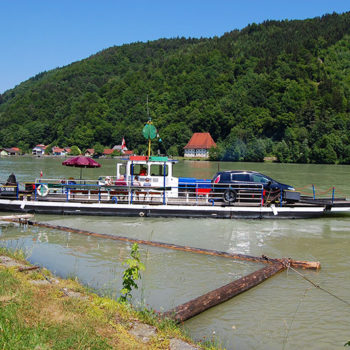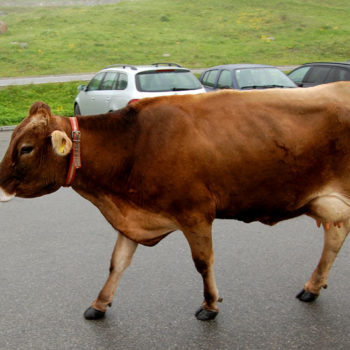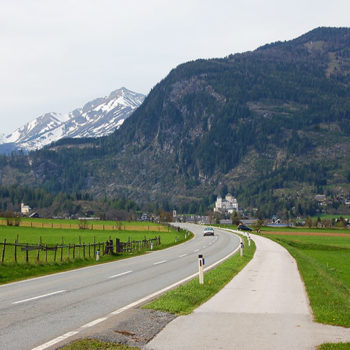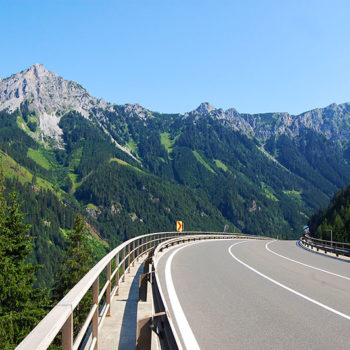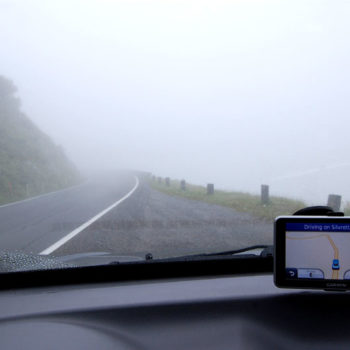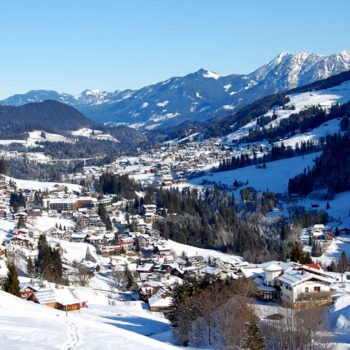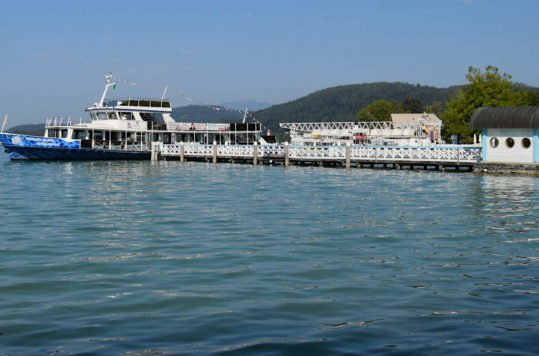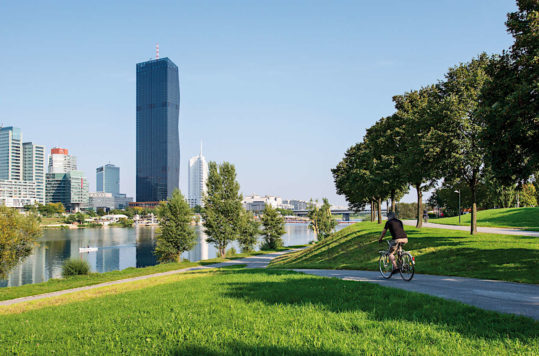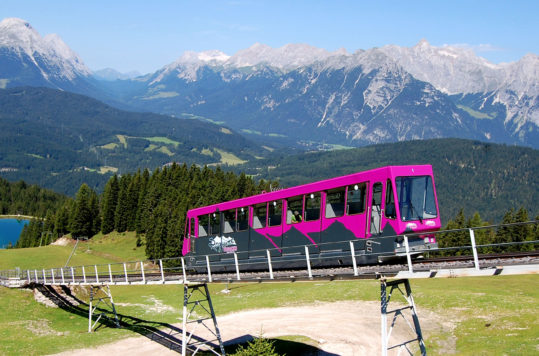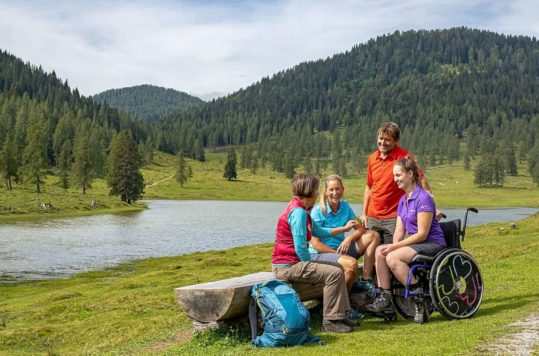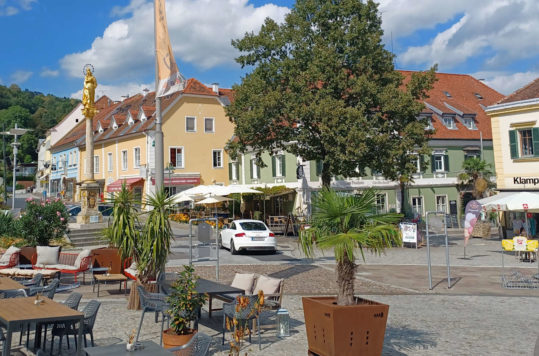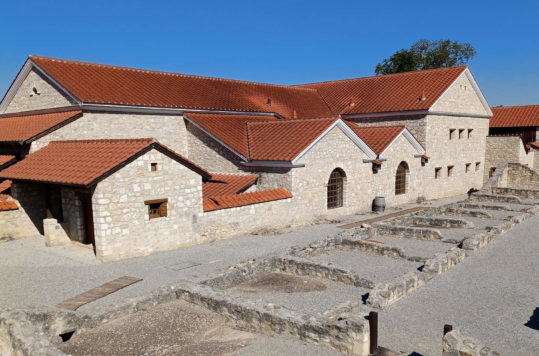Going on a road trip means freedom. Hiring a car for your holiday in Austria is a great option to see places at your leisure.
Austria is a small country with short distances, good roads and well-developed tourist infrastructure. Moreover, you can find outlets from most international car rentals in Austria, and there are several local companies as well.
Great fly-drive holiday destination
Just like in most European countries, driving and parking within the larger cities in Austria can be a hassle. Nonetheless, if you arrive by plane to Vienna, Graz, Linz or Salzburg and want to spend time in the countryside and villages that don’t have frequent public transport services, hiring a car is a good option. However, if you only plan to stay in larger cities and towns, it’s cheaper to travel by bus and quicker by train.
< Click on the images to enlarge >
Great fly-drive holiday destination
Just like in most European countries, driving and parking within the larger cities in Austria can be a hassle. Nonetheless, if you arrive by plane to Vienna, Graz, Linz or Salzburg and want to spend time in the countryside and villages that don’t have frequent public transport services, hiring a car is a good option. However, if you only plan to stay in larger cities and towns, it’s cheaper to travel by bus and quicker by train.
Get off the motorway
The best tip we can give you is to spend as little time as possible on the motorways (Autobahn). Speeding off on smooth roads with a 130 km/h speed limit can be tempting, but you miss out on many great experiences. In Austria, noise protection has also been built along large parts of the motorway network. As a result, you often only see straight into a wall. Instead, use the highway to get quickly between the regions you want to visit, but no more. Both the Bundesstrasse (Interstate) and the Landstrasse (country road) network are very well developed. Yes, even if you end up on a Güterweg (farm road), these are often paved and excellent alternatives.
Advice for driving in Austria
Driving in Austria is not different from driving in the rest of Europe. However, some local peculiarities to be mindful of when driving here, including that road signs are often not in English. Driving is on the right, and seat belts are compulsory in the front and back seats, where available. The use of mobile phones is prohibited whilst driving in Austria.
Speed limits – Here are the standard speed limits you need to remember when driving in Austria:
– Highways –130 km/h (80 miles/h)
– Country roads – 100 km/h (62 miles/h)
– Unless otherwise indicated, in towns and cities / urban areas – 50 km/h (30 miles/h)
Watch out for speed limit signs and cameras on motorways and villages.
Environmental speed limits – On specific stretches of motorway, the speed limit has been reduced from the usual 130 km/h to 100 km/h to reduce the burden of both air and noise pollution, according to an Austrian law on the so-called Immissionsschutzgesetz – Luft (IG-L). Several suburban motorways have reduced speeds at night or during rush hour. This is announced with both fixed signage and light boards. For example, the speed limit for the entire stretch of the A12 Autobahn from the German border at Kufstein to Innsbruck is 100 km/h. Consequently, there are several both fixed speed cameras and mobile speed cameras on this motorway.
ADVERTISEMENT
Road tolls
In Austria, you must pay a road toll to drive on both motorways (Autobahn*) and many dual carriageways (Schnellstrasse**). You do this by buying a Vignette, either as a sticker that you attach to the inside of the windscreen or as a digital vignette. Moreover, you must purchase the Vignette before driving on the toll roads. There are police patrols in the streets of Austria, and one of their tasks is to check whether motorists have the correct Vignette. Nonetheless, most rental cars have an all-year Vignette. Local car rentals do not always offer this. Hence, if hiring a car, check the Vignette before you hit the road. There are more than 6,000 points of sale for Vignettes in and outside of Austria. Hence, there is no reason to take the chance of driving without one. You can find these outlets not only in Austria but also at, for example, petrol stations near the border crossings in neighbouring countries.
Driving in Winter
If you encounter winter, driving conditions differ significantly in Austria. In the mountain regions, there is often a lot of snow. However, the main roads are mostly cleared and salted. Hence, driving is usually no problem. On more minor roads, you may encounter ice and sleet.
Nonetheless, from November 1 to April 15, all cars must be fitted with winter tyres. Check this when you rent a car to be sure. Moreover, snow and ice must be removed from your car’s roof, windows, lights and number plates before driving.

